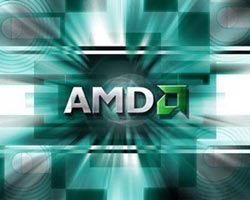How AMD’s New Strategy Will End Intel’s Monopoly in Both the Computer and Server Chip Realms
Just weeks after taking on his new role as AMD’s Global Vice President of Sales Channels, Stephen DiFranco began to ponder: why continue to play the underdog?
Sitting in a boardroom at the headquarters on a crisp October day in 2004, DiFranco felt increasingly disheartened as employees listed a long litany of reasons why competitor Intel was seizing all their business opportunities.
 |
| Source: pc365.com.cn |
Intel provided a trusted brand, spent more on marketing, and offered better customer support. “I kept telling myself, ‘Oh my God! How can we compete like this?’” DiFranco recalled.
The In-Store Battle
Eight months later, during a strategic meeting in June 2005, DiFranco presented an answer to CEO Hector de Jesus Ruiz and other company officials. In a presentation titled “The In-Store Battle“, DiFranco outlined an ambitious campaign for AMD to outpace Intel in retail stores.
The approach DiFranco chose was to compete directly with better products and PC configurations, instead of trying to keep up with Intel through expensive marketing campaigns.
Of course, this task was anything but easy. Skeptical attendees pointed out to DiFranco that AMD didn’t directly manufacture computers but had to rely on partners like HP, Gateway, and Toshiba along with hundreds of other retail companies worldwide to achieve its goals.
“To be honest, many people weren’t too fond of this idea at first“, Ruiz remembered. But just a year later, the results were clear. Intel officials proclaimed that AMD’s rapid rise was solely due to success in the high-end server chip market, but the numbers seemed to contradict them. DiFranco’s retail strategy helped AMD’s PC processor revenue soar by 15.3% in Q1 2006.
Quietly, retail stores were playing a crucial role in helping AMD gain market share. The use of superior AMD chips allowed competitors like HP, Gateway, and Toshiba to gain an edge over Dell. In retail stores outside the U.S., the reality was even more apparent.
This pressure was a significant reason why Dell issued a statement on May 18, announcing that it would begin using AMD chips for its server line by the end of the year. Another piece of news that might send shivers down Intel’s spine: Dell was still negotiating with AMD to use its chips in consumer desktops and notebooks.
Superior Performance
 |
Source: Aurorawdc |
AMD’s ambition to stand as a counterweight to Intel in the processor market is no longer a distant dream. The company now holds 26% of the server chip market in the U.S. and 48% of the multi-core chip market (with at least two chips on a silicon wafer). Three years ago, the high-end server market was Intel’s exclusive domain.
However, AMD’s success owes much (albeit unintentionally) to Intel’s own missteps. It could be said that Intel has made several errors over the years. In the high-end chip market for corporate systems, Intel has mostly stagnated, ignoring customer demands for powerful yet energy-efficient chips.
Instead, Intel’s engineers focused on developing the high-end Itanium server chip, which required customers to rewrite software to fully utilize its capabilities, while AMD’s Opteron did not. Furthermore, AMD’s technology can help large enterprises save substantial electricity costs. Not to mention, Opterons take up less space in data centers as they do not require oversized cooling fans.
Attracting Partners
Faced with this undeniable reality, many large customers decided to abandon Intel. Animation studio DreamWorks and the Philadelphia Stock Exchange are the latest names to replace Intel’s Xeon chip servers with AMD’s Opteron.
With the “The In-Store Battle” campaign, DiFranco wagered that consumers would choose products with AMD chips even if they were more expensive. In return, they would achieve superior performance compared to Intel products.
Another move reflecting DiFranco’s broad vision. He traveled across the U.S., strengthening ties with ATI Technologies and NVIDIA, two leading manufacturers of high-performance gaming graphics chips.
AMD partnered with NVIDIA’s labs in Moscow and Beijing to develop AMD systems for ATI-sponsored games. Faced with the threat of Intel integrating its graphics chips with its processors, ATI and NVIDIA warmly welcomed AMD. Simply put, AMD does not manufacture graphics chips.
The millions of dollars Intel poured into brand promotion campaigns were redirected by AMD into other initiatives. They launched promotional campaigns, discount mechanisms, employee training, and more.
Thiên Ý




















































